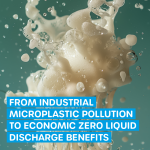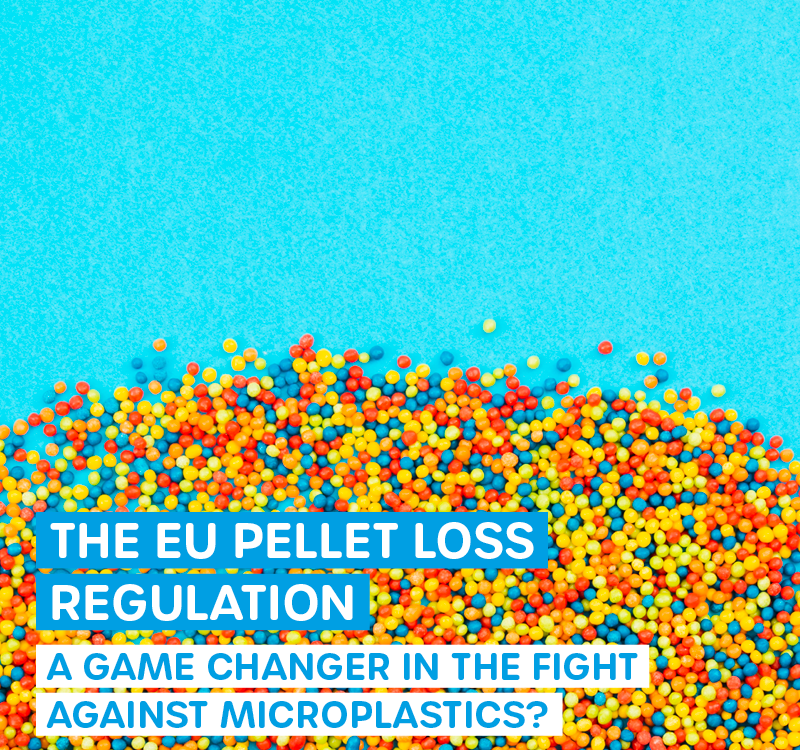
Microplastics and Zero Liquid Discharge
30. October 2025
Microplastic Detectives
3. November 2025Microplastics and Patient Health: What Medical Professionals and Patients Should Know
Microplastics and nanoplastics are no longer just an environmental problem -- they have found their way into the centers of modern medicine. Current studies show that dialysis patients are exposed to continuous and significant microplastic exposure, while intensive care patients show dramatically elevated concentrations of toxic chemicals from medical plastic products.
Dialysis Patients: The Most Severely Affected Group
A groundbreaking study from 2025 systematically investigated microplastic contamination in dialysis solutions for the first time. The results show that microplastics were detected in all tested dialysis solutions, with polyethylene (PE), polyvinyl chloride (PVC), and ethylene vinyl acetate (EVA) being the predominant polymers.
The exposure data is alarming:
- Hemodialysis patients: 9.57 ± 5.28 microplastic particles per week
- Peritoneal dialysis patients: 14.28 ± 0.84 microplastic particles per week (50% higher exposure)
Research estimates that with a filtration efficiency of 99% for microplastics, between 0.0021 and 3768 particles per week can penetrate the kidneys of dialysis patients. This continuous exposure is particularly concerning as dialysis patients use 300-600 L of water weekly, which may be contaminated with microplastics.
Additionally, studies show that dialysis patients have higher microplastic exposure compared to non-dialysis patients.
Phthalate Exposure Through Medical Devices
Parallel to the microplastic problem, a comprehensive investigation of 72 disposable medical products shows dramatic variations in phthalate release -- plasticizers used in plastics.
Total phthalate concentration released from medical products ranged from 0.04 to 54,600 μg, with DEHP (Di(2-ethylhexyl)phthalate -- a commonly used plasticizer) being the main phthalate in 99% of analyzed samples. Particularly concerning: DEHP was also found in significant concentrations in products marketed as "DEHP-free".
Main Sources of Exposure:
Cardiovascular Risks: Proof of Direct Health Damage
Perhaps the most explosive discovery from recent research comes from a study in the New England Journal of Medicine. Patients with carotid artery plaques in which microplastics and nanoplastics were detected had a higher risk for a composite endpoint of heart attack, stroke, or death from any cause during 34-month follow-up.
The numbers speak clearly:
- Polyethylene was detected in carotid artery plaques of 150 patients (58.4%), with a mean value of 21.7±24.5 μg per milligram of plaque
- Patients with detected microplastics had a 4.53-fold higher risk for primary endpoints
This study provides the first direct clinical evidence that microplastics represent not just a theoretical risk but have measurable negative health impacts.
The Economic Dimension
The health effects of plastic chemicals also have a massive economic component. A 2024 published analysis estimates that eliminating BPA and DEHP exposure in countries with one-third of the world's population would have saved approximately 600,000 lives.
The estimated health costs for 2015:
- BPA exposure: 5.4 million cases of ischemic heart disease and 346,000 strokes (BPA = Bisphenol A, used in canned goods and plastic bottles)
- DEHP exposure: Approximately 164,000 deaths in 55- to 64-year-olds (DEHP = Di(2-ethylhexyl)phthalate, plasticizer in medical devices)
- Total costs: 1.5 trillion US dollars purchasing power parity
Additionally, studies show that women with higher PFOS levels in blood had twice the risk of developing hormone receptor-positive breast cancer.
Mechanisms of Toxicity
Scientists increasingly understand how microplastics and plastic chemicals cause harm:
- Cellular Uptake
Particulate plastics can induce oxidative stress, cell death, and inflammation, as well as disrupt metabolism and immune function. Particularly concerning are nanoplastic particles smaller than 1 µm that can penetrate cells.
- Systemic Effects
Studies in animal models and human cells have reported that particulate plastics have toxic effects on kidney and cardiovascular cells, which are enhanced by the presence of other environmental contaminants like heavy metals. Microplastic exposure can disrupt gut flora, reduce sperm quality and testosterone, and impair learning and memory.
Regulatory Responses and Solution Approaches
The European Union adopted updated guidelines in 2024 for benefit-risk assessment of phthalates in medical devices. These cover carcinogenic, mutagenic, and reproductive and endocrine disrupting properties.
Additionally, regulatory agencies like the US FDA have expressed concerns about microplastic or chemical leaching in dialysis systems.
Urgent Research Priorities
The scientific community identifies several critical areas:
- Development of polymer-free medical materials
- Improvement of filtration technologies for dialysis systems
- Long-term cohort studies on chronic health effects
- Standardization of microplastic analytics in medical applications
Alternative Materials
Promising DEHP alternatives for medical devices include:
- TOTM (Trioctyl trimellitate) -- a safer plasticizer
- DINCH (Diisononyl ester) -- biodegradable substitute
- ESBO (Epoxidized soybean oil) -- plant-based
- PVC-free alternatives like polyethylene, polypropylene, and silicone -- completely different plastic types without harmful plasticizers
What Patients and Medical Professionals Should Know
For Patients:
- Inform yourself about materials used in medical treatments
- Ask for DEHP-free alternatives when possible
- Note that "DEHP-free" doesn't automatically mean "phthalate-free"
For Medical Professionals:
- Consider cumulative exposure, especially in long-term patients
- Prefer biocompatible materials with lower chemical release
- Document exposure sources for vulnerable patient groups
Conclusion: A Wake-Up Call for Medicine
The evidence is clear: microplastics and plastic chemicals pose a real and measurable threat to health, especially for vulnerable patient groups. The study shows that eliminating exposures to BPA and DEHP in countries with one-third of the world's population would have saved approximately 600,000 lives.
Additionally, current biomonitoring data from the EPA shows alarming trends in plasticizer breakdown products in the human body:
- DEHP breakdown products: Median 14 μg/L in urine, detectable in 58% of all examined individuals
- DBP breakdown products: Median 20 μg/L in urine, detectable in 96% of subjects (DBP = Dibutyl phthalate, another plasticizer)
- BBzP breakdown products: Median 6 μg/L in urine, detectable in 98% of subjects (BBzP = Benzyl butyl phthalate, used in flooring and wallpaper)
These breakdown products (metabolites) are created when the body processes the original chemicals and excretes them through urine -- they are proof of the organism's burden.
The medical community faces the challenge of weighing the benefits of life-saving plastics against their unintended health risks. The solution lies not in abandoning these essential materials, but in accelerated development of safer alternatives and stricter controls.
The need for action is urgent. Every day we delay implementing safer medical materials means continued exposure for millions of vulnerable patients worldwide. The time for half-hearted measures is over -- we need comprehensive transformation in how we develop, test, and deploy medical plastics.
We research for your health!






